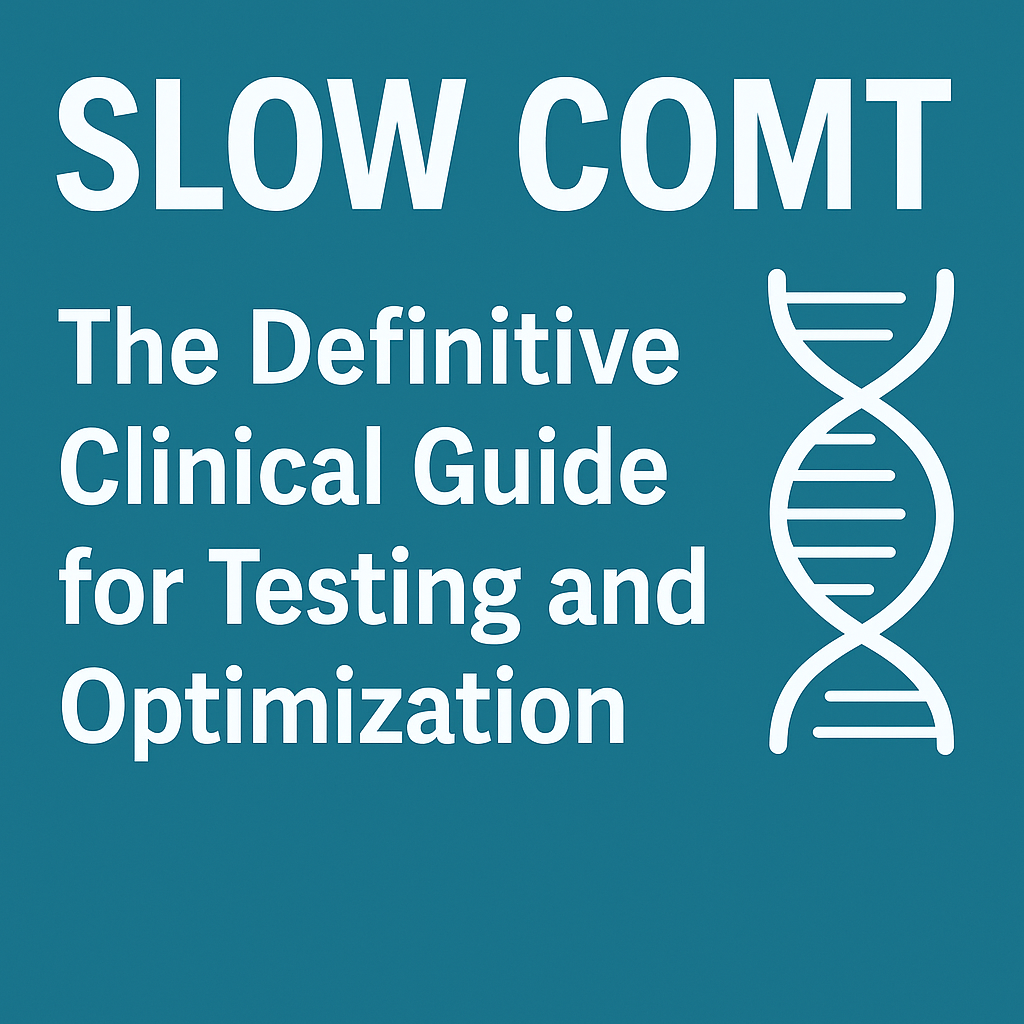Why Vitamin B6 Toxicity Can Happen at Just 2 mg Per Day (And What It Means If Your B6 Level Is High Without Supplements)
Why 2 mg Might Still Be Too Much
The adult Recommended Dietary Allowance for vitamin B6 is only about 1.3–2 mg/day.
For most people this is easily met by diet, and conventionally such amounts are considered safe. Classic teaching holds that toxicity occurs only with very high supplemental intakes (hundreds of milligrams). However, growing evidence and case reports suggest that even modest B6 intake (or none: see my article on B6 toxicity without supplements) can lead to high B6 levels without supplementing in certain individuals.
For example, pharmacovigilance data show many patients reporting neuropathy on just a few milligrams of B6 daily. In other words, plasma PLP elevation (high pyridoxal‑5′‑phosphate)—and its neurological symptoms—have been documented in people taking only “normal” B6 doses.
This paradox not only suggests individual differences in vitamin B6 metabolism—it virtually demands that they exist.
For people to respond so incredibly differently to B6 supplementation logically requires that they bear drastic differences in how they process that vitamin B6.
It’s not a direct dose-response relationship.
This requires a complete overhaul of our understanding of what constitutes a safe dose of vitamin B6, regardless of form.
This article is part of a larger series on B6 toxicity. If you haven’t yet read the master article, do that next. It will give you the foundational framework to interpret your labs, symptoms, and risk patterns more clearly.
What the Research Says About Low-Dose B6 Toxicity
Standard medical reviews emphasize that dietary B6 (usually around 1-2 mg/day) cannot cause toxicity, and even therapeutic use rarely does unless megadoses are involved (see this review, for example).
For example, a StatPearls review notes sensory neuropathy develops typically only at daily pyridoxine doses above ~1000 mg, with no cases reported below 200 mg/day.
Another expert review discourages routine supplementation above 50 mg/day, and found inadequate evidence of harm at lower levels. In short, the prevailing consensus is that most low doses are benign.
However, this is absolutely not definitive.
Let’s look at case reports and surveillance data.
The Netherlands pharmacovigilance center analyzed hundreds of neuropathy cases linked to B6 supplements. 100 such cases involved daily intakes no more than 21 mg per day—far below classic “toxic” levels—and among those, 79 cases were at no more than 12 mg/day.
In these reports the median vitamin B6 intake was only 4.1 mg/day.
In other words, dozens of people developed neuropathy on what most guidelines would call low-to-moderate doses.
Likewise, a case series found peripheral neuropathy after daily multivitamin use, showing that even routine supplements can accumulate to problematic levels over time.
This data—in combination with my clinical experience and an understanding of the physiology and biochemistry behind B6 metabolism—is more than enough to virtually confirm that low dose vitamin B6 supplementation absolutely can cause “toxic” states—in some people, not all.
Symptoms of B6 Toxicity Without High Doses
In individuals who are genetically or metabolically susceptible, vitamin B6 toxicity symptoms often mirror the classic clinical picture of pyridoxine-induced neuropathy.
The most recognizable sign is a progressive sensory neuropathy—often described as tingling, burning, numbness, or electric-shock sensations that begin in the hands and feet and follow a "glove-and-stocking" pattern.
This neuropathy may present with:
Gait instability or poor balance (ataxia)
Paresthesias (pins and needles, buzzing sensations)
Heightened sensitivity to touch or discomfort from normal clothing contact
Muscle weakness or fatigue in distal limbs
These symptoms are not just limited to large nerve fibers. Research shows that chronic B6 overload can impair both large-fiber and small-fiber nerves, sometimes resulting in autonomic dysfunction.
One published case report documented a patient with progressive burning pain, tingling, and distal weakness who was ultimately diagnosed with vitamin B6 toxicity. Sweat testing and nerve conduction studies revealed combined large-fiber polyneuropathy and abnormal small-fiber autonomic function (PubMed).
Importantly, the early signs of B6 toxicity may be subtle—intermittent tingling, patchy numbness, or mild balance issues—and are often misdiagnosed as diabetic neuropathy, vitamin B12 deficiency, or anxiety-related symptoms.
Other oft-overlooked signs include:
Insomnia
Mood swings or heightened anxiety
Restlessness or internal agitation
There is no single pathognomonic symptom of B6 toxicity—i.e. there’s no one symptom that can tell you for sure that this is B6 toxicity.
Instead, this is matter of deep metabolic pattern recognition—especially when neuropathic signs arise without clear cause, and plasma PLP levels are elevated, even without high-dose supplementation.
Why Some People React to “Normal” B6 Intake
Metabolic Variability: Not Everyone Clears B6 the Same Way
While the official tolerable upper limit for vitamin B6 is 100 mg per day, many individuals experience toxicity symptoms—like neuropathy or autonomic issues—at intakes as low as 2 to 5 mg. Why? Because B6 metabolism depends on more than just intake.
Some people carry subtle differences in the enzymes responsible for activating, transporting, or clearing B6, which can result in plasma B6 accumulation despite low exposure. These may not rise to the level of diagnosable disease but still shift the body into a functional B6 overload state.
For example, the body must dephosphorylate B6 before it can enter cells. If this process is inefficient—due to genetic variation, nutrient deficits, or metabolic suppression—PLP can remain trapped in plasma rather than reaching the tissues where it’s needed. That can lead to a paradoxical situation: elevated plasma PLP, low intracellular B6 activity, and symptoms that mirror classic B6 toxicity.
Non-Genetic Factors That Impair B6 Handling
Even without heritable enzyme variants, many people experience acquired impairments in B6 metabolism:
Kidney dysfunction: B6 vitamers, especially PLP, are cleared renally. When kidney function declines, plasma PLP may rise even at standard dietary intakes.
Subclinical liver stress: Early-stage fatty liver or detox overload can impair hepatic B6 clearance.
Cofactor depletion: B6-dependent enzymes require magnesium, zinc, riboflavin, and other nutrients. Even marginal deficiency can slow B6 utilization.
Mitochondrial strain or chronic inflammation: These shift cellular priorities away from B6-dependent pathways, reducing intracellular utilization and leaving more PLP in circulation.
Functional B6 Overload: When Utilization Fails
What connects all these mechanisms is this: B6 toxicity is not just about too much in—it’s about too little out. When the body’s B6-handling systems are overwhelmed, even physiological doses become problematic. The result? A backlog of B6 in the bloodstream, where it begins to exert neurotoxic or pro-oxidative effects, particularly on the peripheral and autonomic nervous systems.
Functional B6 Overload vs Classic Vitamin B6 Toxicity
When Symptoms Are the Same, but the Cause Is Metabolically Different
Yet again, not all cases of vitamin B6 toxicity are caused by massive supplement doses. Many individuals develop identical symptoms—like burning, numbness, or autonomic instability—despite taking normal or low levels of B6.
We might term this functional B6 overload. It differs in mechanism but usually not in presentation from classical toxicity.
What Is Classic B6 Toxicity?
The traditional model of B6 toxicity involves high-dose pyridoxine supplementation—often hundreds of milligrams daily over months or years. Excess pyridoxine saturates and inhibits key PLP-dependent enzymes, leading to neurotoxicity. This form of toxicity is iatrogenic and well-documented in clinical literature.
What Is Functional B6 Overload?
In contrast, functional B6 overload arises when normal or even low B6 intake results in disrupted metabolism, impaired clearance, or misdistribution of B6 vitamers. The body behaves as if it’s overloaded, despite technically normal input. Plasma levels of pyridoxal-5'-phosphate (PLP) may appear high, but tissue behavior is a different matter.
This can happen due to:
Impaired intracellular uptake
Inadequate conversion of B6 to PLP
Blocked dephosphorylation of PLP
Subclinical bottlenecks in cofactor metabolism
Problems with B6-dependent metabolic steps (transamination, liver detoxification pathways, etc.)
In these cases, lab tests may show elevated plasma PLP, but that is not enough to conclusively determine that overall body B6 load is high.
Why Plasma PLP Can Rise Without Taking Supplements
Mechanisms Behind Unexpected Elevation of B6 in Blood
If you’ve never taken a B6 supplement and still show high blood levels: Several well-established mechanisms can explain plasma PLP elevation without supplementation.
1. Impaired B6 Metabolism or Transport
Subtle variations in enzymes that govern vitamin B6 metabolism can cause functional trapping of B6 in the bloodstream, particularly the active form (PLP). These aren’t always clinically diagnosed disorders—but may show up as persistent high B6 levels with low intracellular activity, especially in people with chronic symptoms like tingling or heat sensitivity.
2. Kidney or Liver Dysfunction
The kidneys are the primary route of B6 elimination, and even mild renal impairment can lead to PLP accumulation. Similarly, hepatic stress or early liver dysfunction may impair first-pass B6 metabolism, allowing unmetabolized B6 to remain in circulation longer than intended. These patterns often go unnoticed unless labs are interpreted with functional insight.
3. Dietary B6 Accumulation from Fortified Products
Many health foods—including protein powders, pre-workout drinks, and cereals—contain fortified B6 in doses ranging from 1–5 mg per serving. Multiple servings per day, especially in health-conscious individuals, can push daily intake to 20–30 mg or more. Over time, this background exposure may raise plasma PLP to levels associated with toxicity—especially if metabolic clearance is impaired.
4. Imbalance Between B6 Forms (Vitamer Shift)
B6 exists in several forms: pyridoxine (inactive), pyridoxal (PL), and pyridoxal-5'-phosphate (PLP, the active form). A relative excess of one form—especially from fortified foods or multivitamins—can create a competitive imbalance in enzyme systems. For instance, pyridoxine can inhibit PLP-dependent enzymes, compounding symptoms even when blood levels appear “normal.”
What to Do If Your Vitamin B6 Levels Are High Even Without Supplements
A Clinical and Metabolic Action Plan for Functional B6 Overload
If you're experiencing symptoms like tingling, burning, numbness, or unexplained anxiety—and your plasma PLP is elevated despite not taking B6 supplements—this is how to clinically and metabolically approach suspected B6 overload, especially in complex or unexplained cases.
Step 1: Comprehensive Clinical Assessment
Before assuming your symptoms are idiopathic or stress-related, pursue a detailed clinical evaluation for functional B6 toxicity:
Review all supplements, medications, and fortified foods. Even “healthy” items like energy drinks, protein powders, and multivitamins very often contain hidden B6.
Request a serum PLP (pyridoxal-5′-phosphate) test. Normal reference range is typically less than 200 nmol/L (<20–30 µg/L).
Neurological examination: Focus on gait, reflexes, and light touch/vibration in extremities. Early small-fiber involvement may present subtly.
Consider nerve conduction studies if neuropathy is suspected, especially in long-standing or worsening cases.
Importantly, remember that most physicians won’t think to check vitamin B6 levels unless you mention taking high-dose supplements, so you’ll almost certainly need to request the test explicitly if symptoms match the pattern.
Step 2: Eliminate All External B6 Sources
Even low-dose or “natural” products may contribute to high plasma B6 levels over time.
Stop all supplements containing B6, including multivitamins, B-complexes, energy tablets, and prenatal blends.
Eliminate fortified food and drinks, especially cereals, shakes, bars, and energy beverages that list B6 (pyridoxine hydrochloride or PLP) on the label.
Note: Recovery through this route takes often months to years. The key to quicker healing is to identify your precise metabolic derangement, as below.
Step 3: Precision Testing to Find the Root Cause
Why a Precision Approach Is Necessary and Why You Should Be Wary of the DIY Approach
Even after stopping all sources of B6, symptoms generally do continue. That’s because the real problem is what your body is doing with the B6 still sequestered.
Again, elevated B6 levels don’t always mean there’s too much intake. In many cases, B6 isn’t being properly processed, activated, or cleared. And precisely locating such issues requires incredible nuance.
Here’s what that kind of investigation involves:
A complete nutrient panel is just the start. Riboflavin (B2), B12, folate, magnesium, and zinc must be interpreted in light of how they affect vitamin B6 metabolism, not just whether they’re in range.
Core biochemical pathways—like transamination, phosphatase activity, methylation, detoxification, etc. etc. etc.—must be evaluated together, not in isolation.
When warranted, more advanced testing can reveal key roadblocks:
A PLP-to-4-pyridoxic acid ratio can indicate impaired B6 clearance.
Genetic variants (e.g., in PDXK or PNPO) can explain why B6 builds up in the blood but fails to work inside cells.
Etc.
If you’re experiencing B6-related symptoms, elevated plasma PLP, or unexplained neuropathy, please do be aware that the patterns are nuanced and getting it wrong can make things significantly worse.
Why B6 Toxicity Is a Precision Medicine Problem
Vitamin B6 toxicity at low doses signals deeper biochemical individuality.
While population-wide guidelines like the RDA or Tolerable Upper Intake Level (UL) are based on average responses, they can’t account for people whose enzyme function, clearance capacity, or intracellular metabolism deviate from the norm.
Some individuals, due to inherited or acquired inefficiencies in B6 processing, show paradoxical patterns: elevated plasma PLP despite low intake, or neuropathic symptoms at doses considered safe. These cases don’t reflect classic overdose but reveal a mismatch between intake, activation, usage, and clearance.
Recent research confirms that even minor genetic variants in B6-processing enzymes can reshape how the vitamin behaves: what’s harmless for most may cause toxicity in a small subset. Add in variables like organ function, medication use, methylation status, and cofactor availability, and you get a wide range of tolerances, even at just 2 to 5 mg/day.
This is the core of precision medicine: nutrient safety, like treatment, must be personalized. One person’s baseline dose might be another’s threshold for serious damage.
If you want to work with me personally: let’s talk.



















